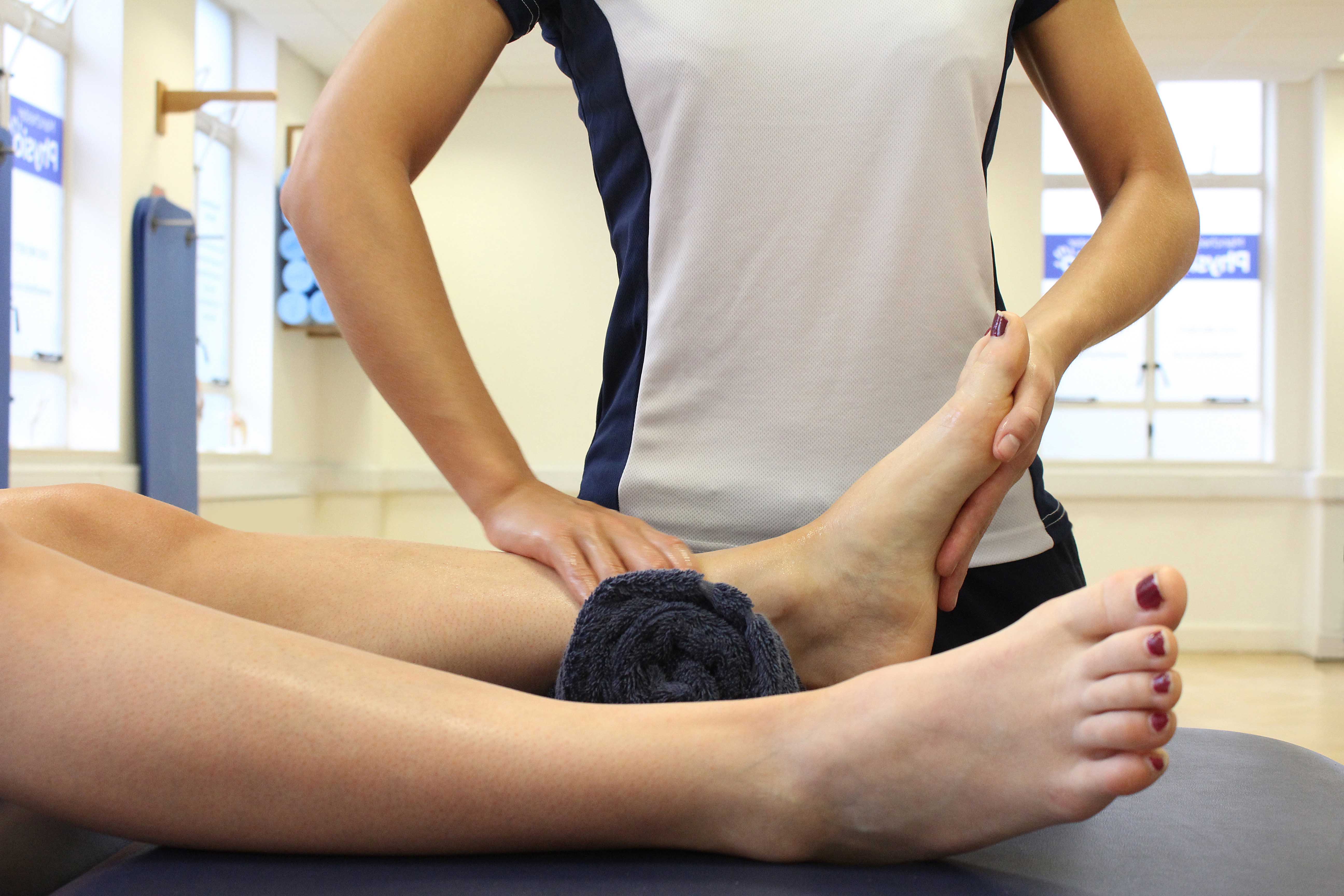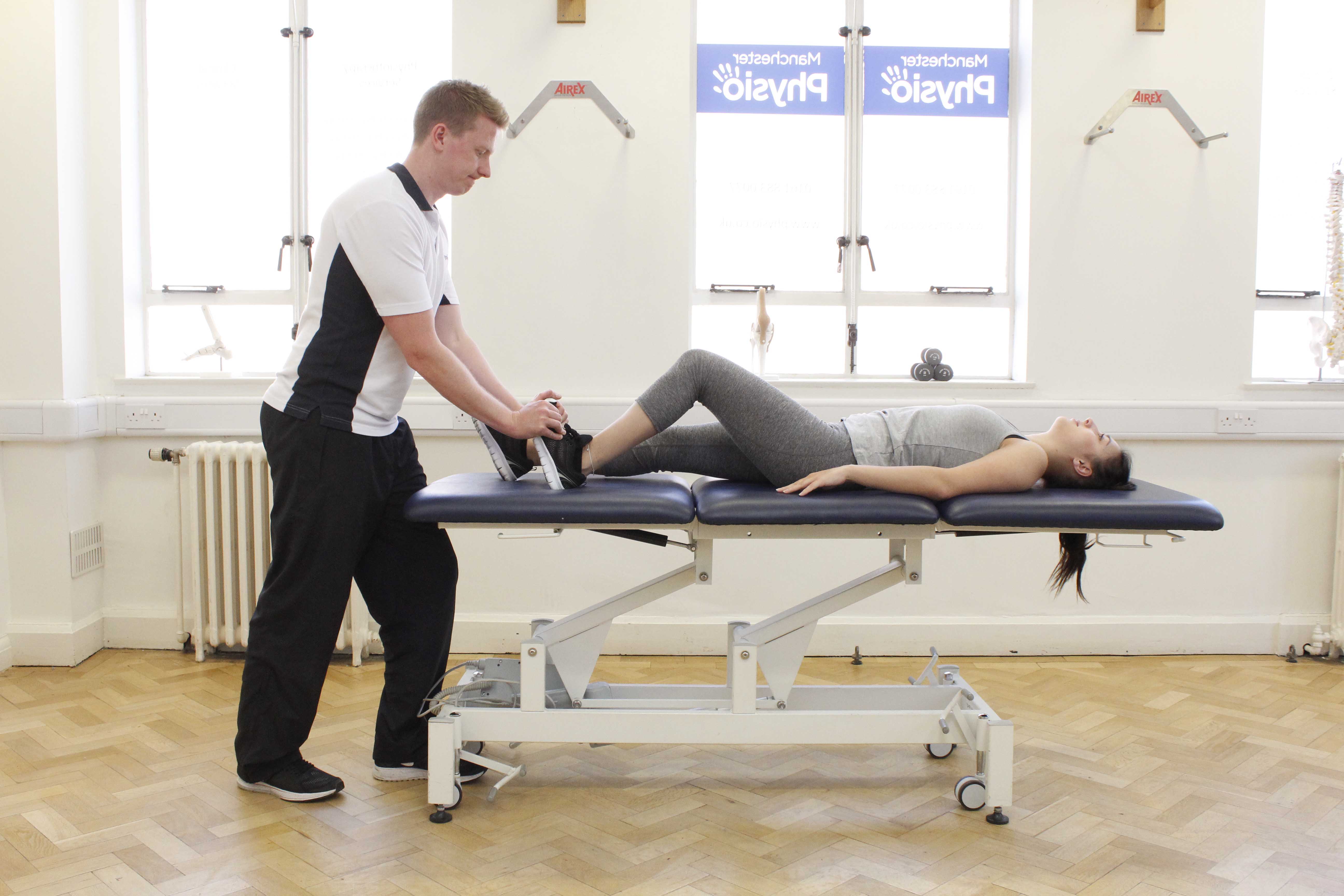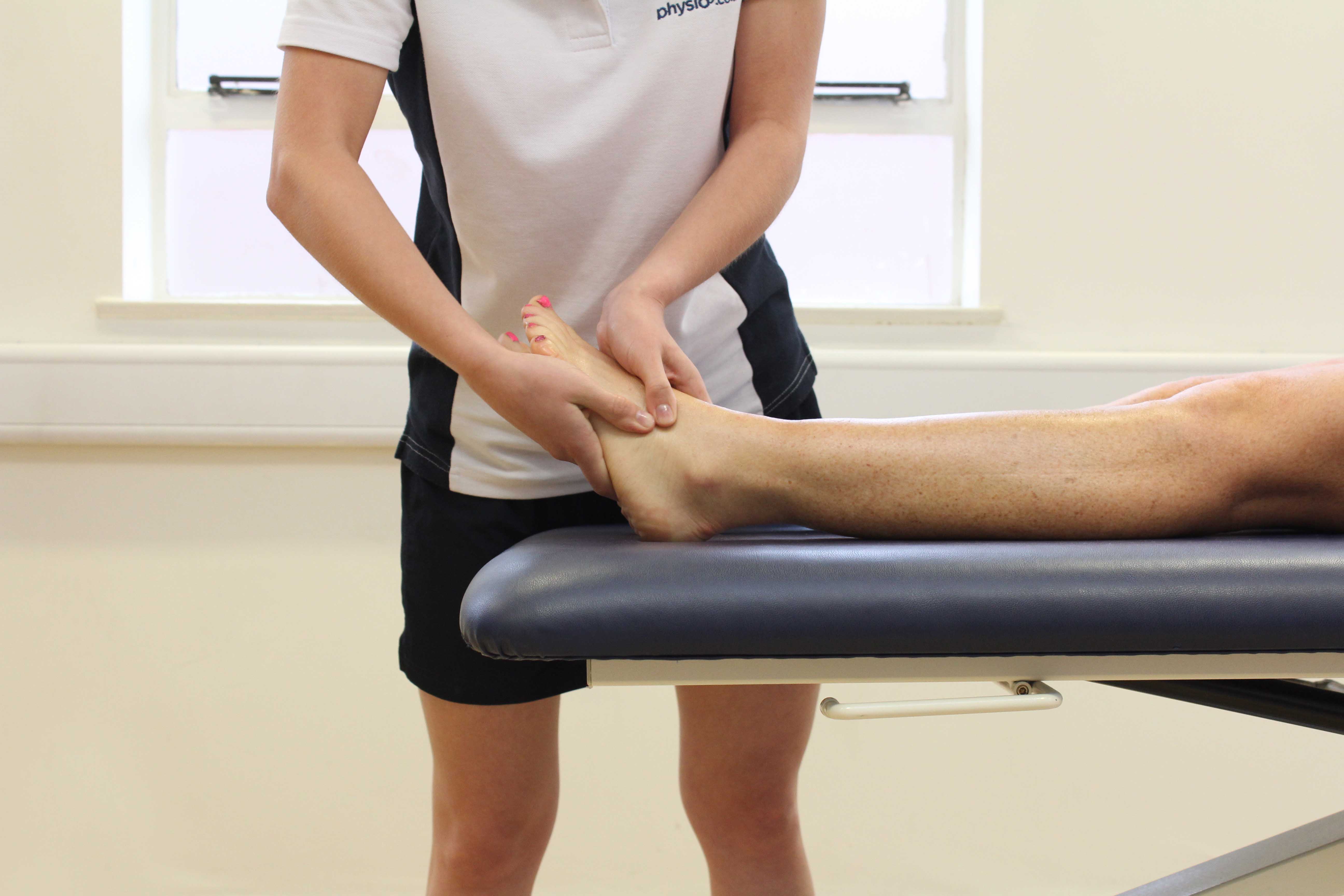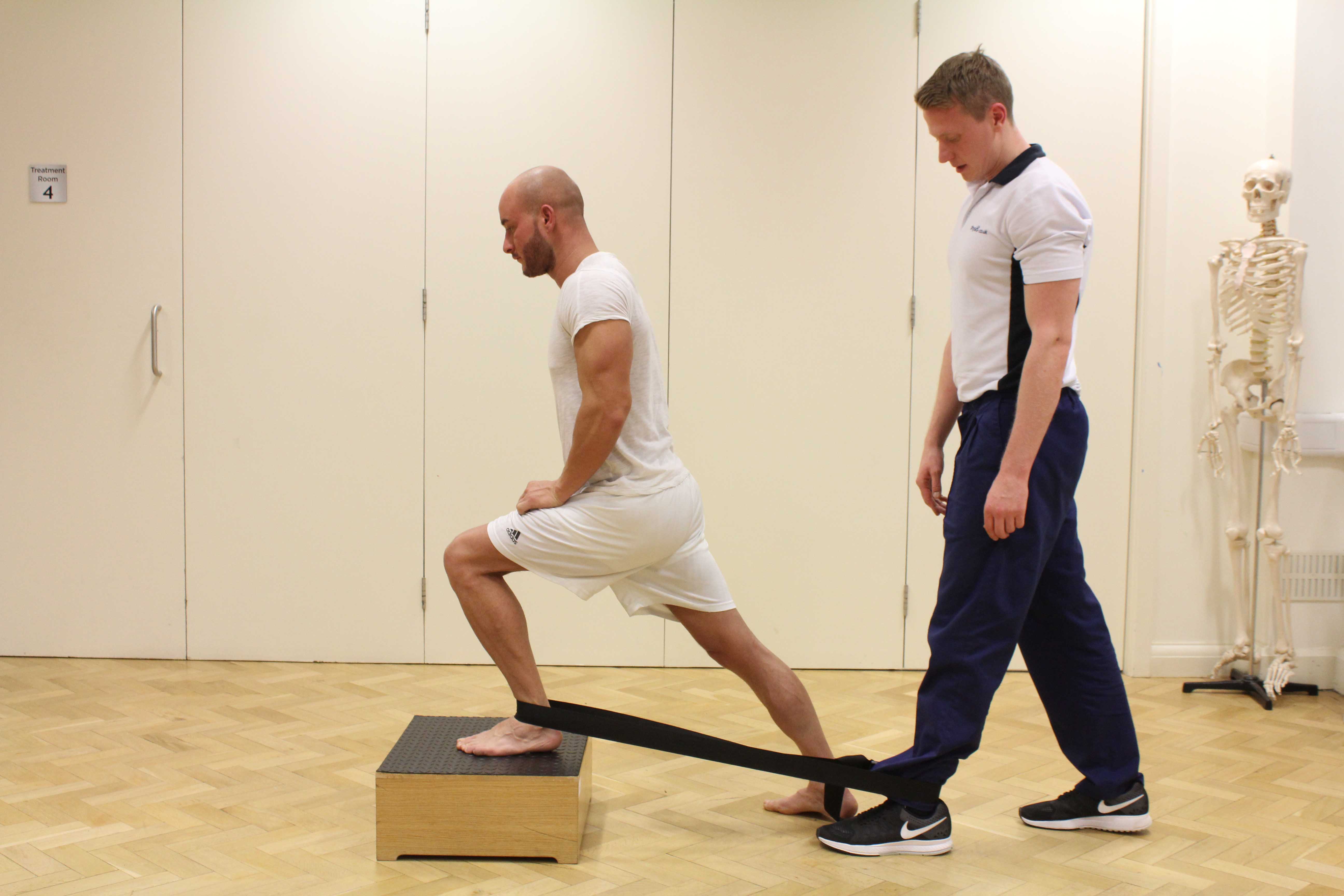Joint replacement surgery of the big toe joint (first metatarsophalangeal)
Joint replacement surgery of the big toe is used to treat patients with severe osteoarthritis of the big toe (Hallux Rigidus).
Hallux Rigidus is a form of degenerative arthritis affecting the joint at the base of the big toe. It is a progressive condition that causes stiffness in the joint that worsens over time. Pain and stiffness in the joint are often more apparent in cold weather, and are aggravated with walking.
The joint of the toe big toe is replaced by an artificial joint that is designed to work in the same way as its original counterpart.
The big toe(first metatarsophalangeal) joint playsan important role in propulsion and normal gait ofthe human body. It is this weight-bearing property that means it is often subject to (as are other main weight-bearing joints - the hip and knee) degenerative overuse diseases such as arthritis.
 Above: mobilisations and stretches of the foot and ankle
Above: mobilisations and stretches of the foot and ankleAs with any degenerative joint disease, non-surgical treatment is mainly focused on maintaining range of movement, and decreasing pain as opposed to attempting to regain lost range of movement.
Metatarsophalangeal joint replacement for severe osteoarthritis of the big toe(Hallux Rigidus) is carried out if you are experiencing severe pain and loss of movement. It tends to be carried out in younger patients who live an active life, as it is this patient group that requires movement fusion surgery cannot maintain. Joint replacement surgery is often carried out secondary to an unsuccessful Cheilectomy, as an alternative to less than ideal fusion surgery.
The operation involves an incision being made on top of the foot extending from the big toe to the mid-foot. A section of bone is then removed from either the base of the big toe, or the end of the foot bone in order to create space into which the new joint can be inserted. The surgeon will then prepare the space for the insertion of the new joint by removing any bone debris that may be present. The big toe will then be bent in order to insert the joint, and straightened to clamp the joint into position, the incision will be then sealed with stitches and the body will incorporate the joint naturally.
Physiotherapy is important following surgery to reduce pain and swelling, and encourage the artificial joint to move correctly.
 Above: Passive stretch of the foot and ankle
Above: Passive stretch of the foot and ankleSymptoms afterjoint replacement of the big toe
You are likely to experience residual pain and discomfort round the scar site for the first couple of weeks following your operation. It is likely the joint will feel “odd” following surgery; your physiotherapy sessions will help enable you to use the joint as if it was your own.
Physiotherapy after joint replacement of the big toe
0-2 weeks Initially you will walk round in a surgical boot on the heel of your injured foot with the aid of crutches. This will enable healing to take place and the new joint to “bed in”. Our physiotherapists will advise you to rest with your foot elevated and apply ice to reduce pain and swelling. As you will be relatively immobile, our physiotherapists will be able to provide you with a seated exercise regime to maintain the strength in your lower body. This programme is likely to focus particularly on the hip, knee and ankle joints.
 Above: Friction massage of the ligaments in the foot
Above: Friction massage of the ligaments in the foot2- 6 weeks Physio.co.uk will develop a personalised programme including gentle active range of movement exercises for your new joint. Our physiotherapists will also be able to introduce exercises to teach your joint what it feels like to be in different positions – this is called proprioceptive work.You may also be taught a self massage technique that will speed up the healing round the scar site.
6 – 8 weeks Following your x-ray review, should everything be going to plan, it is likely you will be able to begin walking normally on your foot. Our physiotherapists will be able to assist you in developing a correct walking pattern in which your new joint will act exactly as your old one should have. It is also important at this stage to begin to introduce balance exercises.
8 weeks + Now you’re up and walking correctly our physiotherapists will turn their attention to the tasks you may be finding difficult or have been too anxious to try as yet. These may include driving, returning to sport or simply climbing the stairs. It is likely to be a few more months before you are able to return to sport in a competitive capacity but our physiotherapists will help your development through this time with treatment sessions becoming more and more functional for what you aspire to achieve.
 Above: mobilisations and stretches of the foot and ankle
Above: mobilisations and stretches of the foot and ankleSummary
Joint replacements of the big toe are usually only carried out in the most severe cases of arthritis of the big toe (Hallux Rigidus). The procedure tends to be carried out in active patients to whom maintaining a degree of movement within the big toe joint is important and fusion surgery therefore inappropriate. The operation involves replacing the arthritic joint with an artificialjoint that is designed to work in the same way as its original counterpart. Physio.co.uk will be able to assist following surgery to make sure your joint is able to work as well as possible. Our physiotherapists’ initial aims will be reducing pain, and maintaining the strength in surrounding joints. Once x-rays confirm your operation has been successful and you are able to begin putting weight onto your foot, our physiotherapists will work alongside you to create an extensive and detailed week-by-week plan focused on increasing confidence in your new joint, and achieving any other personal goals.
Call Physio.co.uk now on 0330 088 7800 for more information or to book an appointment please contact us.

 0330 088 7800
0330 088 7800





































